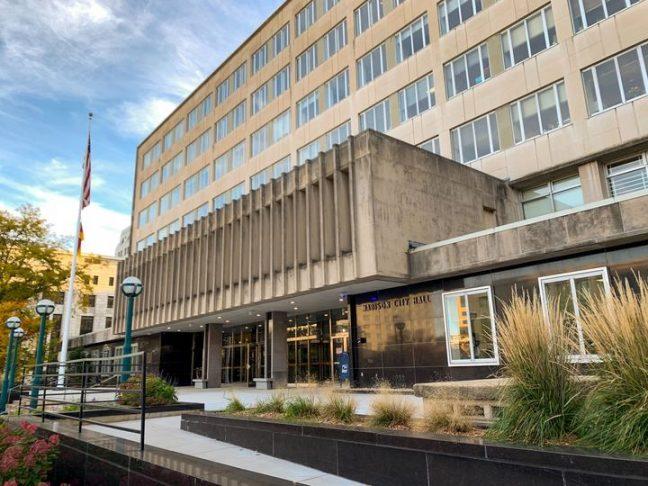The Oscar Mayer redevelopment project sought to provide Madison residents with various housing and job opportunities while also protecting the area’s environment.
Started in 2018, the project has culminated in the Oscar Mayer Special Area Plan. The plans to redevelop the land into an area of housing and employment for everyone, while also providing the best in Madison transportation are laid out in the document.
Dan McAuliffe, the plan’s project manager from the City of Madison, believes that this is an opportunity to provide for everyone in Madison. The Oscar Mayer Special Area Plan showcased that a large portion of the redevelopment will be made into an area available for offices and manufacturing, among other commercial uses. McAuliffe said that one of the primary focuses for the redevelopment was making an area that could provide jobs for a variety of experiences.
“Making sure that the site supports economically the north side as it has in the past, but also does so in a way that provides a diversity of jobs,” McAuliffe said. “So not just college-educated people, really trying to make sure that the vast majority of Madison residents could find employment there or find a role that they could do.”
Before it’s closure, the Oscar Mayer facility provided thousands of jobs for residents in Madison, according to the Special Area Plan. The plan intends to make up for that loss and Alderman Sayed Abbas was excited about the prospect. Ald. Abbas said he is hopeful the redevelopment will create 4,000 jobs within the area.
McAuliffe said equity was a major focal point for the project. Planners want to make an area that has a variety of job opportunities, and on top of that, a variety of housing options.
“Kind of talking again about that range of jobs but also how we think about housing,” McAuliffe said. “Making sure that there is a range of housing types both in terms of scale affordability and character.”
McAuliffe said that the development will have a range of housing options, including options for lower-income households. Because the plan was still in the developmental stages, McAuliffe was not certain exactly what housing would look like.
The Special Area Plan described three different types of housing — low-medium residential, medium residential and high residential. Each housing type serves a variety of different incomes and lifestyles. Housing for lower-income residents will be interspersed throughout the development McAuliffe said.
“Making sure that we are not concentrating poverty in any existing areas,” McAuliffe said. “So, we are trying to make sure that the income distribution in the neighborhood is balanced.”
Ald. Abbas said the community wants to see various forms of housing within the development. Residents did not want to see only high-rise buildings within the development, but different housing styles, prices and locations, Ald. Abbas said.
While the plan hopes to provide housing and jobs for a myriad of people, it is also taking into account environmental factors in the redevelopment. On the Hartmeyer Estate lay wetlands that both the city and residents are hoping to protect.
“All the plans we’ve looked at would preserve the wetlands,” McAuliffe said. “They have critical ecological value and certainly we would work to preserve those.”
Ald. Abbas said that protecting the ecological wetlands that sit on the Hartmeyer Estate was important to the area’s residents. Residents were hoping that the entire 31-acre area could be bought and protected, according to Ald. Abbas. The city decided that despite public protest, it would not purchase the land because of the Bus Rapid Transit system, according to McAuliffe.
Ald. Abbas was a strong proponent of protecting the area. As a result, Ald. Abbas said that once the Special Area Plan has passed through the Madison Common Council, Ald. Abbas will ask for an environmental assessment.
“I proposed an amendment in the budget, in which I proposed $20,000 allocated money to do an environmental assessment of [the] 31-acre land and see how much contamination is there, [and] what is the value of the land,” Ald. Abbas said. “So, if tomorrow the city wants to purchase that to protect this land then we know the value.”
There were other areas within the plan that residents of District 12 were concerned about, especially the plan to open Coolidge Street into a four-way intersection, Ald. Abbas said.
Ald. Abbas said residents were concerned about opening the community to increased traffic flow because of the strong presence of families and children.
“A lot of residents have a lot of concerns with opening Coolidge Street for automobile traffic, [it] will change the whole look of the neighborhood,” Ald. Abbas said. “The neighborhood is very residential, a lot of kids playing … Sometimes kids go in the road to get into the park because that road is not open to Packers.”
Despite some of the community’s concerns, Ald. Abbas said that overall the plan was really good. Both Ald. Abbas and McAuliffe hope that the redevelopment will help to increase jobs and housing within the area.
McAuliffe hopes the plan can be adopted by the Spring, allowing the implementation phases to begin.


